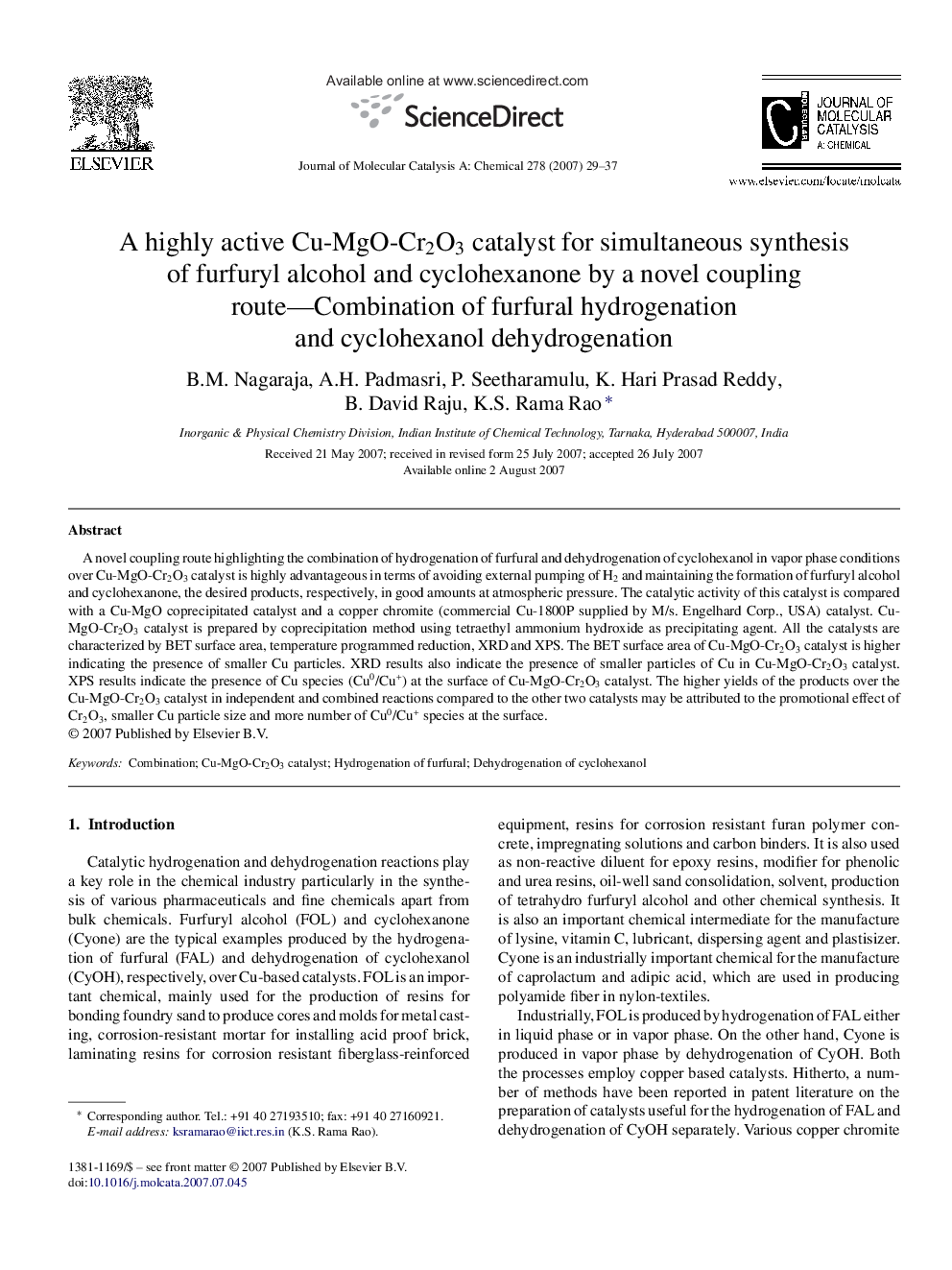| Article ID | Journal | Published Year | Pages | File Type |
|---|---|---|---|---|
| 67708 | Journal of Molecular Catalysis A: Chemical | 2007 | 9 Pages |
A novel coupling route highlighting the combination of hydrogenation of furfural and dehydrogenation of cyclohexanol in vapor phase conditions over Cu-MgO-Cr2O3 catalyst is highly advantageous in terms of avoiding external pumping of H2 and maintaining the formation of furfuryl alcohol and cyclohexanone, the desired products, respectively, in good amounts at atmospheric pressure. The catalytic activity of this catalyst is compared with a Cu-MgO coprecipitated catalyst and a copper chromite (commercial Cu-1800P supplied by M/s. Engelhard Corp., USA) catalyst. Cu-MgO-Cr2O3 catalyst is prepared by coprecipitation method using tetraethyl ammonium hydroxide as precipitating agent. All the catalysts are characterized by BET surface area, temperature programmed reduction, XRD and XPS. The BET surface area of Cu-MgO-Cr2O3 catalyst is higher indicating the presence of smaller Cu particles. XRD results also indicate the presence of smaller particles of Cu in Cu-MgO-Cr2O3 catalyst. XPS results indicate the presence of Cu species (Cu0/Cu+) at the surface of Cu-MgO-Cr2O3 catalyst. The higher yields of the products over the Cu-MgO-Cr2O3 catalyst in independent and combined reactions compared to the other two catalysts may be attributed to the promotional effect of Cr2O3, smaller Cu particle size and more number of Cu0/Cu+ species at the surface.
Graphical abstractA highly active Cu-MgO-Cr2O3 catalyst for simultaneous formation of cyclohexanone and furfuryl alcohol in a novel coupling route from cyclohexanol and furfural is advantageous in terms of avoiding external H2 supply and the presence of Cu0/Cu+ species with the smaller Cu particle size at the surface are responsible for good yields.Figure optionsDownload full-size imageDownload as PowerPoint slide
